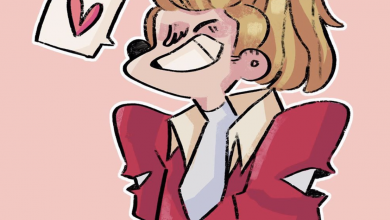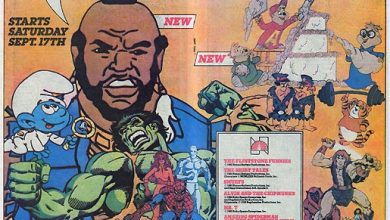Virtual Field Tripping: Shelf Life from the AMNH

I adore the American Museum of Natural History in New York City. From my first trip there as an awkward tween, I’ve been hooked. Before we were married, Spouse and I fell in love among AMNH’s dinosaurs. It was only natural that when Offspring came along we would make one of our favorite places part of her life, as well. Sadly, I no longer live close enough to visit New York more than once a year, but I never go to The City without going to AMNH. Imagine my joy at discovering that, at least a little, AMNH will come to me wherever I am!
Shelf Life is a series of brief documentaries exploring life backstage at AMNH. I’ve found, over the years, that many people view museums as static entities, almost like three dimensional picture books. Nothing could be more distant from the truth. Museums, especially giants like AMNH, are vibrant, complex institutions. Their collections are sites of active, ground-breaking research which means, in turn, that there has to be work done on the construction and organization of those collections. The management and archiving of specimens encompasses a number of fields that are all exciting in their own right. While public outreach and education are certainly obvious and incredibly important aspects of a museum’s mission, they are only the tip of the iceberg, and even the work that happens in those realms is far more dynamic and creative than much of the public realizes. Shelf Life introduces viewers to the amazing breadth of the American Museum of Natural History.
Upsides:
• Behind the Scenes Peaks at AMNH’s Collections: Most museums only put a percentage of their permanent  collections on display at any one time. It’s easy to forget (or just flat not know about) the absolute quantity of information that is archived, and not on show. In the case of AMNH, this amounts to over 33 million specimens. In fact, celebrating the extent of the collections was part of the inspiration for Shelf Life (as well as the name). Episode One: 33 Million Things, introduces viewers not only to the mind boggling breadth of the collections, but also to a bit of the human element, curators, archivists, researchers and scientists, who are the life of the museum.
collections on display at any one time. It’s easy to forget (or just flat not know about) the absolute quantity of information that is archived, and not on show. In the case of AMNH, this amounts to over 33 million specimens. In fact, celebrating the extent of the collections was part of the inspiration for Shelf Life (as well as the name). Episode One: 33 Million Things, introduces viewers not only to the mind boggling breadth of the collections, but also to a bit of the human element, curators, archivists, researchers and scientists, who are the life of the museum.
• Diversity and Variety: You’re likely to notice this first in the range of topics. From coelacanths to space to forams to the Olinguito, the spectrum is broad and growing. Shelf Life is releasing one video a month. Next month promises to cover collaborative work between an anthropologist and a computational biologist to parse ancient languages, while Episode 2 centered on turtles and taxonomy. Whatever you, or your children, are interested in, I suspect that AMNH will get to it in this series.
Perhaps even more importantly, however, Shelf Life demonstrates the diversity of the people who work in the museum. It isn’t just the director of the museum and lead researchers who are speaking to the viewer. We hear from “the senior scientific assistant in the Department of  Ichthyology” and an intern working on “microfossil digitization”. If you want your child to have an appreciation of the incredible variety of possible careers, this is an excellent starting place.
Ichthyology” and an intern working on “microfossil digitization”. If you want your child to have an appreciation of the incredible variety of possible careers, this is an excellent starting place.
Beyond this, we see a variety of people who clearly love what they do. Different faces, ages, genders, clothing choices, and accents are represented. Kids pick up on many things that we don’t realize. I remember being profoundly saddened when Offspring, as a toddler, saw a picture of Sally Ride and asked, with that combination of matter-of-factness and awe that only a toddler can manage well, whether people could be both women and astronauts. In three trips to the Space Center at Cape Canaveral, and a library of space books for small children, she had only seen men and had drawn the conclusion that maleness was a prerequisite. The Shelf Life videos will not leave your child feeling alienated. As GrrlScientist at the Guardian observed, Shelf Life is the antidote to the view that natural history museums are “peopled exclusively with dry, dusty old white men, rooting around in dry, dusty old drawers, examining dry, dusty old dead things.”
• Visual Appeal: Shelf Life videos are slick and beautiful. Interview footage is well-chosen and alleviated with other visuals.
• Support Material: The videos are made for a YouTube attention span (see below), so there’s a limit to what can be put in them. They come with text and links to take you on beyond, if you are interested.
Downsides:
• Brevity: While it may be the soul of wit, brevity can leave a bit to be desired in this case. At about 5 minutes each, the videos can’t do more than offer a teaser. Offspring described them as being like the introduction to a documentary, but without delivering the rest of the story, and I’d have to agree. They work well as appetizers to inspire your interest, and it is true that there’s text and links to follow, but I liked the videos so much that I wanted more for each topic.
• Sound Quality: The videos subtitle some of the speakers with heavy accents, but I found that I had to use the Closed Caption option to catch what some of the other speakers were saying.
Final Verdict:
 Shelf Life is completely worth following. It probably won’t appeal to very young children, but the American Museum of Natural History has other online resources for them. Beautifully crafted and packing a ton of material in small packages, the Shelf Life series is a lovely consolation to those of us who cannot visit AMNH in person as often as we would like. 4.5 out of 5.
Shelf Life is completely worth following. It probably won’t appeal to very young children, but the American Museum of Natural History has other online resources for them. Beautifully crafted and packing a ton of material in small packages, the Shelf Life series is a lovely consolation to those of us who cannot visit AMNH in person as often as we would like. 4.5 out of 5.

All images are from the Shelf Life website.




